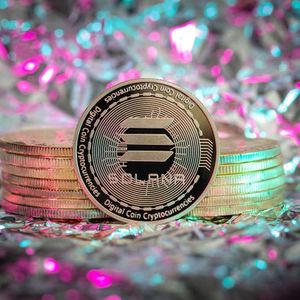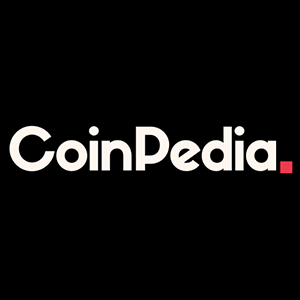REX-Osprey SOL + Staking ETF: A Game-Changer For The U.S. Market
6 min read
Summary SSK is the first US ETF to offer Solana staking rewards, marking a milestone for digital asset ETFs in the US market. The fund’s C-corp structure enables staking yield payouts but introduces double taxation and a relatively high 1.4% expense ratio. Solana’s staking yields remain robust, driven by transaction fees and stablecoin activity, supporting a positive outlook for SSK’s income potential. I rate SSK a ‘buy’ as the best available Solana staking ETF until a superior structure emerges. For the first time in the United States market, there is an ETF product that provides investors exposure to Solana USD ( SOL-USD ) with staking rewards. The REX-Osprey SOL + Staking ETF ( SSK ) launched on July 2nd. In my view, this is a significant milestone for US-based digital asset ETFs. In this article, we’ll look at how the fund is constructed and the staking rewards expectations for Solana, and I’ll compare SSK to some other Solana-themed products/tickers currently available in the market. REX-Osprey SOL + Staking ETF Details Fund Assets $12,117,250 Shares Outstanding 475,000 Management Fee 1.40% Fund Inception 07/02/2025 Source: REX Shares, as of 7/3/25 Like most of the crypto closed-end funds offered by Grayscale, Osprey, and various other asset managers, SSK has a fairly simple objective: to mimic the returns of the chosen digital asset—in this case, Solana. The key difference for SSK is that it offers yields from staking the underlying asset. Until now, spot ETFs tracking digital assets in the United States have not paid out blockchain reward yields to shareholders. This is less of a problem for proof-of-work assets like Bitcoin USD ( BTC-USD ) or Litecoin USD ( LTC-USD ), but the inability to stake ETF-held assets has generated an opportunity cost for proof-of-stake assets like Ethereum USD (ETH-USD) or Solana in the US market. Where I think the market may have expected a crypto staking ETF from a larger asset manager like BlackRock, Inc. ( BLK ) or Fidelity, REX Shares pulled off approval of such a product in a slightly roundabout way; SSK is structured as a C-corp rather than as a grantor trust. This means the fund is slightly more complex than a standard spot ETF, both from a taxation standpoint and from an asset holdings standpoint. For instance, one of the ways SSK has Solana staking exposure is through the Europe-based 21Shares Solana Staking ETP: SSK Holdings (REX Shares) Per REX Shares, management will invest at least 80% of fund assets into Solana and other assets that replicate the return of Solana through a subsidiary company. Despite this, perfect correlation isn’t guaranteed. Although the Fund seeks returns that correspond to the returns of the Reference Asset, the Fund’s performance will not replicate the performance of the Reference Asset. The fund has a somewhat high expense ratio at 1.4% considering the C-corp structure could lead to double-taxation of the staking rewards. Though it has yet to happen since the fund is brand new at the time of article submission, REX Shares will pay out rewards from staking on a monthly basis. Since the fund is structured the way it is, the staking yield from the Solana blockchain will be initially subject to corporate taxes, and then the shareholder will again be taxed on the distribution. The benefit of the C-corp structure is that SSK did not require a 19b-4 filing with the SEC, which allowed for a less strict, faster approval process than would be expected from a spot ETF with staking embedded. So while it probably isn’t the best way to do SOL Staking longer term through an ETF wrapper, SSK may benefit from being the first product to market. Where Does The Yield Come From? A standard question that should be asked of any risky asset is: What drives the yields? We know with the proliferation of covered call and option income strategy ETFs that those yields typically come from activity in the options market. My view has been that such funds should perhaps be less interesting to income investors since the yields aren’t very predictable and reliant on options market volatility. However, staking assets on-chain should lead to yields that are a bit less volatile given the nature of the PoS network. Solana Staking Reward Source (Dune Analytics/21labs) That said, Solana has seen a growing share of staking rewards come from transaction fees in recent years. In July 2022, fees made up a little over 1% of validator staking rewards. That number grew to 5-6% in July 2024 and is closer to 8% today. Some of this is due to the dis-inflationary nature of Solana’s issuance schedule, which sees new coins into circulation decline by 15% every year until new issuance is just 1.5%. But there is no question Solana’s underlying usage has helped drive fees and, by extension, staking rewards: Monthly Fees By Chain (Artemis) There has certainly been volatility in the transaction fees paid by blockchain network users over the last several years, and Solana has not been an exception. After reaching an all-time high of $253 million in fees during the month of January, Solana’s monthly fees have considerably normalized in 2025. June was actually the first month this year when Ethereum beat Solana in monthly fees. Regardless, current yields from staking remain consistent with longer-term averages: SOL Staking Revenue and APY (Dune Analytics/21labs) The 7-day average staking APY was close to 8% in June. This was very much in line with the 7-9% range that has been typical for Solana stakes going back to early 2023. You can see the large spike in the 7-day average APY during the large fee revenue months in November 2024 and January 2025. What this implies is that when fees grow from Solana usage, yields from staking will as well. Given the blockchain’s speed and $10.7 billion stablecoin footprint, positioning in a stake-enabled Solana fund is a fine way to express a stablecoin growth thesis from where I sit. SSK vs. Alternatives Does SSK offer Solana bulls the best way to purchase SOL versus the growing list of alternatives in the market? US investors can now purchase SOL through CEF wrappers like the Grayscale Solana Trust (SOL) ( GSOL ) or the Osprey Solana Trust ( OTC:OSOL ). They can also get exposure to staked SOL through Solana Treasury companies like Upexi, Inc. ( UPXI ) and DeFi Development Corp. ( DFDV ). Here’s a comparison to consider: Solana Exposure Expense Ratio Market Cap SOL Value Premium/Discount Yield? REX Shares-Osprey SOL 1.40% $12,117,250 $12,041,250 0.63% Yes Grayscale Solana Trust 2.50% $79,107,523 $80,248,727 -1.42% No Osprey Solana Trust 2.50% $25,298,226 $30,295,181 -16.49% No Upexi – $144,700,000 $110,900,000 30.48% No DeFi Development – $337,300,000 $96,164,620 250.75% No Sources: REX Shares, Osprey, Grayscale, Upexi, DeFi Development, author’s calculations Right off the bat, the Solana Treasury Companies are noncompetitive from a mNAV standpoint. DFDV trades at nearly 4x the value of the Solana underlying the company’s Solana strategy. Upexi, while much less egregiously priced than it was two months ago , is still pricing in four years of staking yields before taxes. At a 1.4% discount to NAV, GSOL figures to track mostly with Solana from here. But from where I sit, it’s OSOL that actually looks quite interesting at a 16% discount to the underlying SOL managed by the fund. To be sure, OSOL doesn’t pay out staking yields, but as an arbitrage play, I actually think it’s more appealing than SSK currently. Closing Summary If nothing else, SSK is an important ETF as, to my knowledge, it is the first that offers crypto staking yields to US investors. If you envision a world where stablecoins are a meaningful part of global commerce and Solana plays an active role in that world, SSK is probably worth a look. As a Solana pure-play, SSK makes a lot of sense over a fund like GSOL or the Solana Treasury companies in the public markets. That could certainly change if Upexi and/or DeFi Development shares are priced more in line with mNAV. Today, I think OSOL is a better way for Solana’s speculative capital given the NAV rate arbitrage currently being provided by the market. But I’m going to open SSK coverage with a ‘buy’ and will entertain buying the fund personally until there is a Solana Staking ETF in the US market that isn’t structured as a C-corp.

Source: Seeking Alpha



